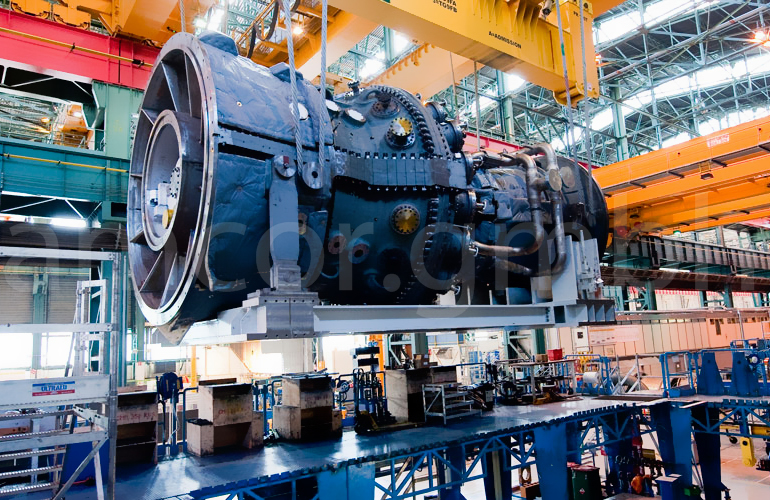Diagnostics
Nowadays improving the reliability, repairability, and efficiency indexes of the gas turbine units (GTUs) are of particular urgency.
One of the important conditions of the long-term reliable operation of the GTUs in a wide range of the operating modes is to carry out timely and high-quality technical diagnostics. The main functions of the diagnostics are: to evaluate the current condition of the unit, detect breakdowns and defects, predict the remaining in-service life, and monitor the technical condition.

As a part of the maintenance, diagnostics is aimed not only to provide reliable operation, but also to improve the efficiency of the unit, reduce maintenance costs, as well as reduce costs associated with downtime for repairs.
The major and the most frequently used methods of the GTU diagnostics include parametric methods, using which there is no need to stop and disassemble the unit. Parametric diagnostics allows receiving information about the condition of the GTU and its individual structural elements, assemblies, and systems based on the changing of the operating GTU parameters.
The main parametric method is a diagnostics by thermogas dynamic parameters, for example, power, performance, efficiency, fuel consumption and other fuel and energy indicators. Practice shows that during long-term operation, parametric indicators change significantly. Analysis of the results and comparison of the data actually obtained with the standard characteristics makes it possible to evaluate the current GTU condition, the dynamics of its change, predict further work, and develop a system of preventive maintenance overhauls.

Vibrational methods and tribomonitoring can be referred to the parametric methods, although quite often they are considered as independent methods.
Vibration control is an important tool for condition evaluation of the GTU. Measured during vibration diagnostics, the parameters of vibration displacement, vibration acceleration, vibration velocity, as well as frequencies, amplitudes and oscillation phases help to detect malfunctions of rotary machines, including misalignment (shafts misalignment), defects in bearing assemblies, increased wear of parts, enlarged backlashes and clearances.
Tribodiagnostics is a method for diagnostics of a technical condition based on the analysis of the wear products which have contacts with the oil. Information about the number of wear products, the dynamics of its change, the presence of chips, the material of the chips and particles of wear products allows for a quantitative and qualitative evaluation of the wear process of the GTU parts.
GTU diagnostics based on the noise spectrum of a gas turbine, compressor, and rotating parts is an effective diagnostic method. Determination of the noise range components and monitoring of their changes during operation provide important information for the evaluation of the GTU condition.
In addition, during GTU operation, diagnostics of the heating temperature of the parts and the uneven temperature of the gases in the turbine are carried out. This data helps to evaluate the wear of parts, to identify the malfunctioning of nozzles and filters, defects of the gas supply sections and flame tubes.
With the help of the visual and optical diagnostics, deformations, cracks and ruptures of the materials, damages of the coatings of the high-temperature parts and assemblies are detected.
The methods and periods of the diagnostics are determined in the special regulations and instructions with a reference to a specific GTU type.